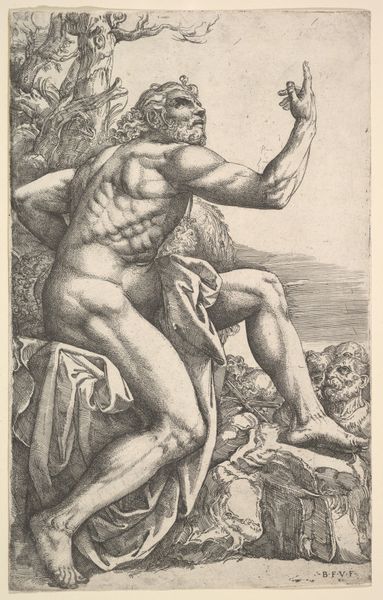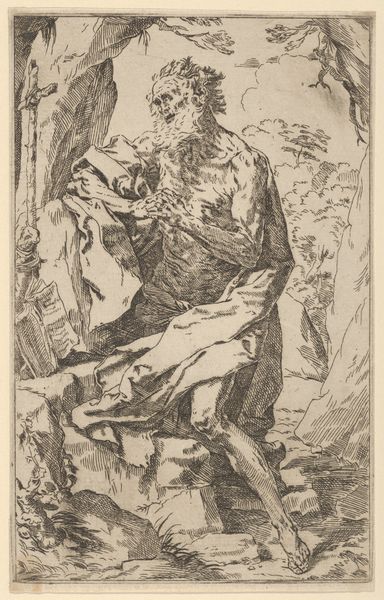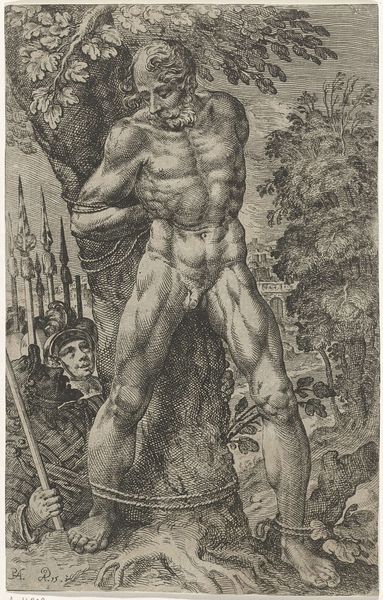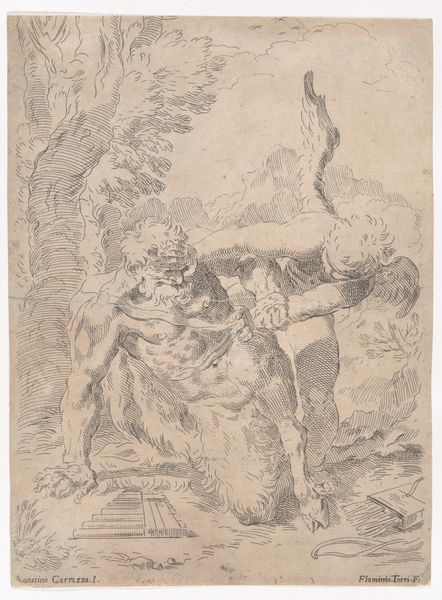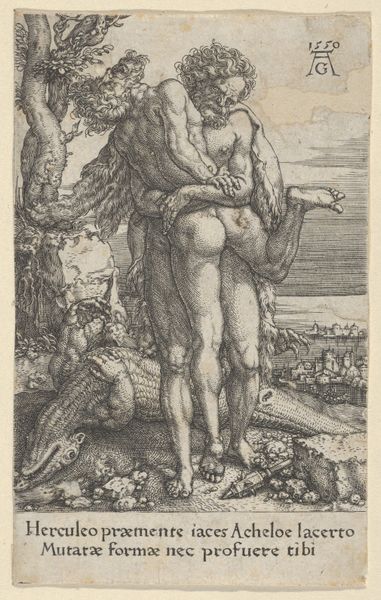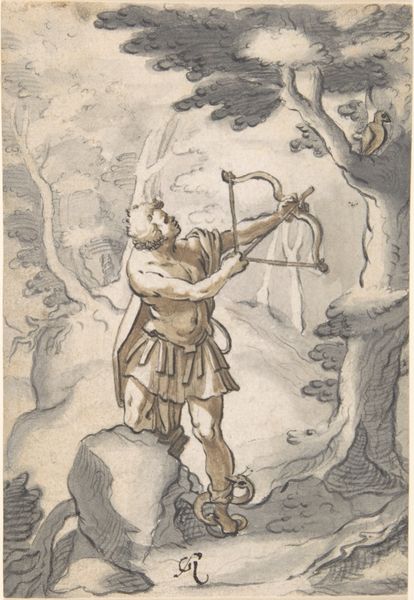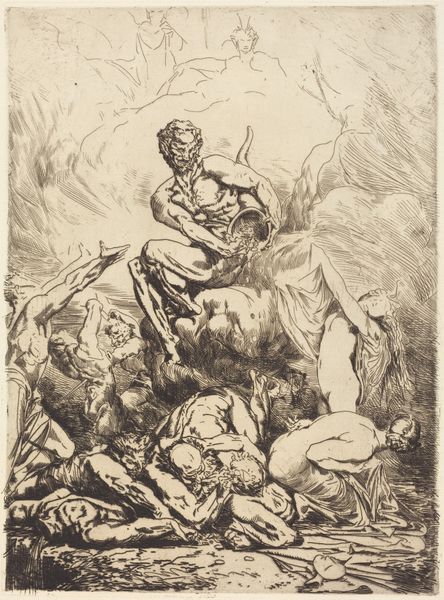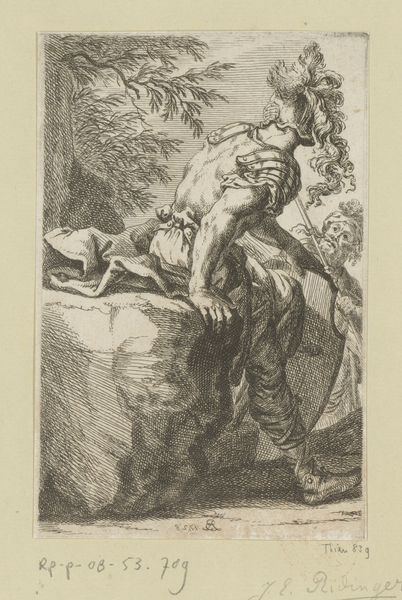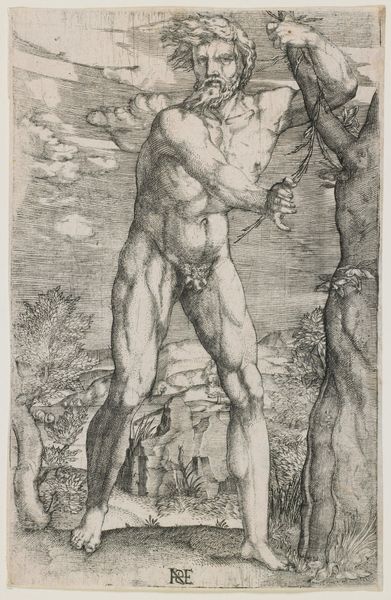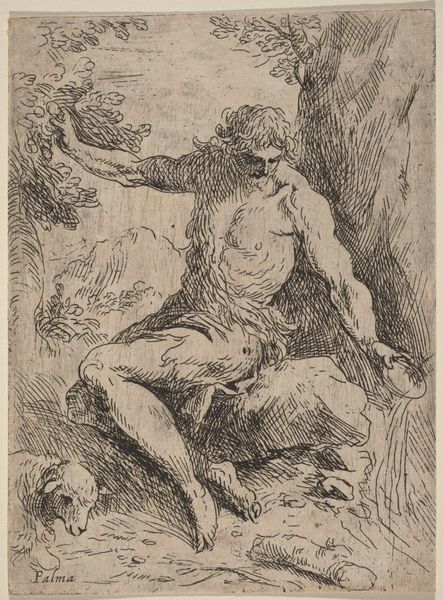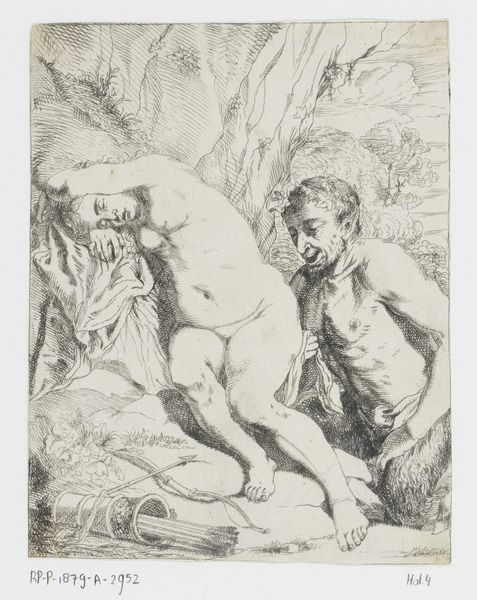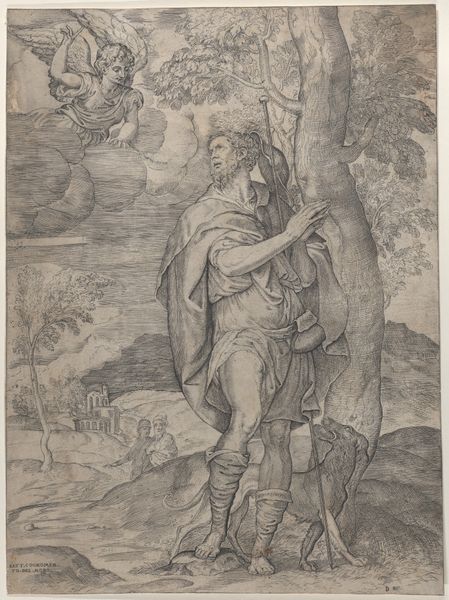
drawing, print, engraving
#
drawing
# print
#
greek-and-roman-art
#
landscape
#
mannerism
#
figuration
#
history-painting
#
engraving
#
male-nude
Dimensions: Sheet: 10 3/4 × 7 3/8 in. (27.3 × 18.7 cm)
Copyright: Public Domain
Curator: Immediately, the textures stand out to me in this engraving. There's a clear tension between the raw, almost coarse rendering of Prometheus’ body and the precise, controlled lines forming the mountainous backdrop. Editor: Precisely. Here we have "Prometheus" by Sebastiano de' Valentinis, created around 1558. It’s a fascinating take on the classical myth, housed here at the Met. The scene depicts Prometheus chained, an eagle devouring his liver. But it is more than just the myth. Curator: True, the chains on his leg seem almost perfunctory against the sheer scale and weight of the eagle. Consider the economics of printmaking. The materiality of ink and paper are employed here to circulate this scene far beyond painting. How does it democratize and dictate access to these mythological archetypes, and shape perceptions across wider social classes? Editor: Absolutely. Printmaking enabled the distribution of these images and narratives across geographical boundaries. Consider the political context; Valentinis worked during a period of significant social and religious upheaval. These classical themes could have been viewed through that lens—Prometheus as a symbol of rebellion against authority, resonating with contemporary struggles for freedom. Curator: Yes! And think about the social status embedded in artistic techniques themselves! Was engraving perceived differently than painting or sculpture, perhaps seen as craft rather than “high” art? Its reproductive capacity challenges the aura of uniqueness traditionally valued, creating tensions that reflected anxieties around artistic production and labor practices at the time. Editor: His choice to stage the event in such an elaborate landscape seems designed to amplify Prometheus’ suffering but it also echoes concerns about the status of intellectuals in courts. Prometheus stole fire for humanity; a sort of enlightenment ideal, that many thought questioned divinely ordained power structures. What better symbol than a chained intellectual to highlight that cultural power struggle? Curator: So true! That suffering becomes tangible not just through subject matter, but through the cross-hatching and lines that render his very muscles and tendons… this intense focus really enhances that bodily awareness of pain, consumption and power... I can see what interested you! Editor: The more we explore these layers of creation, production and political projection the more resonant "Prometheus" becomes!
Comments
No comments
Be the first to comment and join the conversation on the ultimate creative platform.

